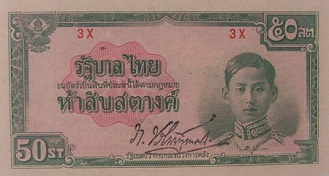
50 Satang (1942)
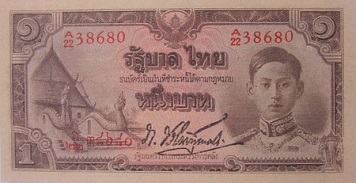
1 Baht (1942 - 1944)
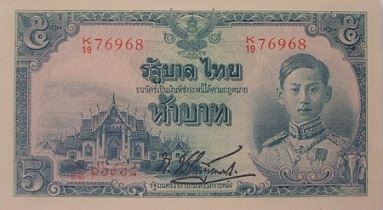
5 Baht (1942 - 1945)
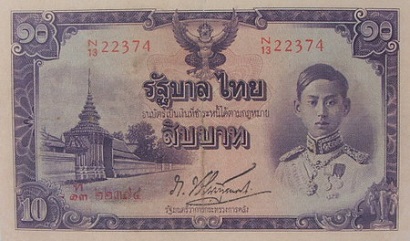
10 Baht (1942 - 1945)
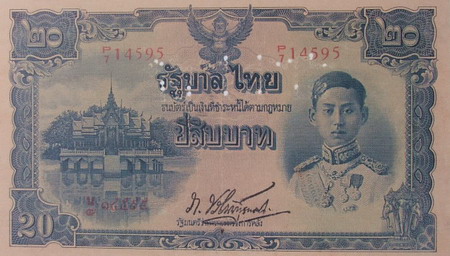
20 Baht (1942 - 1945)
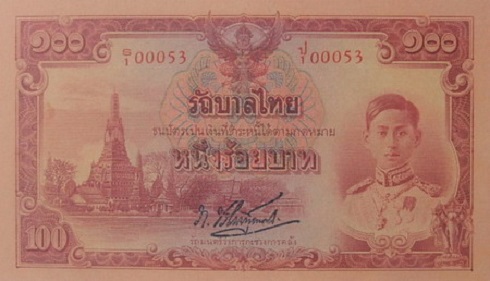
100 Baht (1943 - 1945)
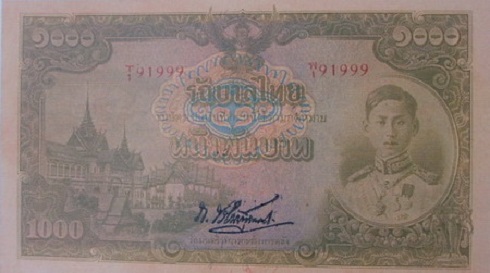
1000 Baht (1944)
Appraisal price ; click on each denomination

Banknote Info
During the World War 2, Thai government had the banknote shortage problem because there was no delivered banknotes from Thomas de la Rue due to England was at war with Japan. The Thai government requested Japan to arrange the banknote printing. The Mitsui Bussan Kaisha Company was commissioned to act as an agent to contact the Japan Printing Bureau.
The banknotes later were different from those of early batches because Japan was heavily attacked by the Allies towards the end of the war thus causing shortage in raw materials.
The banknotes from Japan were transported to Thailand by air and by sea. The Mitsui Bussan Kaisha Company reported that a plane had technical problems and had to land at Hunan Island. One box of 100 Baht (type 2 S 13 and S 14) notes was broken and 11,518 notes were burned. But later the reported burned notes were found in circulation. The Ministry of Finance announced on 14th Febuary 1946 to indicate those illegal notes. And the Bank of Thailand compromised to accept notes from one who had evidence showed that they had been received before announced date.
For the sea, the first shipments were directly to the port in Bangkok. Later heavier attacked by the Allies, the delivered bypass to Singapore then transported to Bangkok by train. In one shipment, the train arrived to Ta Chang station at Surattani, some boxes of banknotes were stolen. 74,000 of 5 Baht, 224,000 of 10 Baht, 72,000 of 20 Baht and 40,968 of 100 Baht banknotes were pushed by feet from the train. Then the stolen notes were found in circulation with forged signature printed, The Ministry of Finance announced on 24th August 1946 that those notes were illegal. Anyway one those could show evidence of honesty would be accepted. So those illegal notes were so-called Thai Teeb (pushing by Thai's feet) notes and Leng ta Chang (the Minister Leng's signature printed at Ta Chang) notes.
